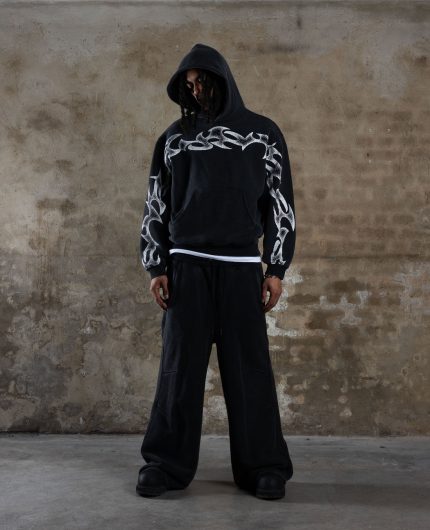When done correctly, exterior painting can breathe new life into your home, enhance curb appeal, and protect your property from the elements. However, small mistakes can quickly lead to peeling, fading, or uneven coverage that reduces both the beauty and longevity of your paint job. Over the years, professionals have identified recurring errors homeowners make—issues that can easily be avoided with proper planning, tools, and execution.
At Rockstar Painting, we’ve seen the difference that attention to detail and industry expertise can make. Whether you’re a DIY enthusiast or planning to hire a professional, understanding the most common pitfalls in exterior painting can save you time, money, and frustration while ensuring the results last for years.
Skipping Proper Surface Preparation
One of the biggest mistakes in exterior painting is neglecting surface preparation. Paint adheres best to clean, dry, and smooth surfaces. Dirt, mildew, loose paint, or moisture on the surface can cause new paint to bubble or peel prematurely.
Preparation steps include:
- Power washing to remove dirt, dust, and grime.
- Scraping off old, flaking paint.
- Sanding to smooth rough edges.
- Repairing damaged wood, siding, or trim before painting.
Skipping or rushing these steps might seem like a time-saver, but in reality, it shortens the life of your paint job and leads to costly rework.
Choosing Low-Quality Paint or Tools
A common cost-cutting mistake is using cheaper paints and brushes. While low-cost paint may seem budget-friendly, it often lacks the pigments, binders, and resins needed for durability. Similarly, bargain brushes and rollers can leave streaks, shed bristles, and produce uneven finishes.
For long-lasting results, opt for premium exterior paints that are formulated for weather resistance and UV protection. Pair them with high-quality brushes and rollers to achieve a smooth, even coat. The initial investment pays off through fewer touch-ups and longer intervals between repainting.
Ignoring Weather Conditions
Weather plays a huge role in how well exterior paint cures and adheres. Painting in extreme heat, direct sunlight, or freezing temperatures can cause uneven drying, cracking, or blistering. Likewise, starting an exterior painting project right before rain or high humidity can ruin your work.
The ideal conditions for painting are:
- Mild temperatures (between 50°F and 85°F).
- Low humidity.
- Overcast or shaded areas to prevent paint from drying too quickly.
Monitoring the forecast and planning your project during the right season is a crucial step in achieving professional-grade results.
Failing to Use Primer When Needed
Skipping primer is another mistake that can reduce the quality and lifespan of your paint job. Primer acts as a bonding agent between the surface and the paint, ensuring better adhesion, improved coverage, and longer durability.
Primer is especially important when:
- Painting over bare wood or metal.
- Changing from a dark to a light color (or vice versa).
- Painting over patched or repaired areas.
A quality primer also helps block stains and prevent bleed-through, giving you a more uniform finish.
Applying the Wrong Number of Coats
Some homeowners try to save time by applying just one coat of paint. While this might look acceptable initially, it rarely provides adequate coverage or durability. On the other hand, applying too many coats without allowing proper drying time can cause drips, streaks, and uneven texture.
For most exterior painting projects, two coats of high-quality paint over a primer base will provide the best balance of coverage, vibrancy, and long-term performance.
Neglecting Safety Measures
Painting a home’s exterior often involves ladders, scaffolding, and working at heights. Without the right safety precautions, you risk serious injury. Wear non-slip shoes, use stable ladders, and never overreach when working at height. If the job requires multi-story access, consider hiring professionals equipped with the proper gear and training.
Overlooking Small Details
Details such as trim, gutters, and window frames can make or break the final look. Rushed or sloppy work in these areas is highly visible and can diminish your home’s overall curb appeal. Use painter’s tape to achieve clean lines, and don’t forget to inspect hard-to-reach spots.
Remember, exterior painting is not just about covering walls—it’s about delivering a uniform, polished appearance from every angle.
Working Without a Maintenance Plan
Even a perfect paint job requires maintenance to stay looking fresh. Dirt, mildew, and harsh weather can wear down your home’s exterior over time. A good practice is to wash your exterior annually, touch up any chips or cracks as they appear, and plan for a repaint every 7–10 years depending on climate and paint quality.
Why Hiring Professionals Can Prevent These Mistakes
While many homeowners tackle exterior painting themselves, hiring a professional painter ensures you avoid these costly mistakes. Experienced painters know how to prepare surfaces properly, choose the right products, work within safe weather conditions, and apply paint with precision.
By trusting experts, you also save yourself the time and effort of climbing ladders, handling heavy equipment, and dealing with cleanup. In the long run, professional work often lasts longer and enhances your home’s value more effectively.
Conclusion
A flawless exterior painting project requires more than just picking up a brush—it demands careful preparation, the right materials, favorable weather, and attention to detail. By avoiding common mistakes like skipping primer, choosing poor-quality paint, or ignoring safety, you can achieve results that enhance your home’s appearance and stand the test of time.
For homeowners who want a stress-free experience and exceptional results, partnering with a trusted professional like Rockstar Painting can make all the difference. With the right approach, your exterior paint job will not only look stunning but also protect your home for years to come.
Frequently Asked Questions
How long should an exterior paint job last?
A high-quality exterior painting job, when done correctly, can last 7–10 years depending on climate, materials, and maintenance.
Can I paint my house exterior myself?
Yes, but be prepared for extensive preparation, safety measures, and time investment. Hiring a pro can ensure lasting results.
Do I always need to use primer?
Not always, but primer is strongly recommended for bare surfaces, drastic color changes, or repaired areas to ensure paint adhesion.
What is the best time of year for exterior painting?
Spring and fall are generally best due to mild temperatures and lower humidity levels.
How do I choose the right paint color for my home’s exterior?
Consider your home’s architecture, neighborhood style, and environmental surroundings. Test sample colors in different lighting before committing.




